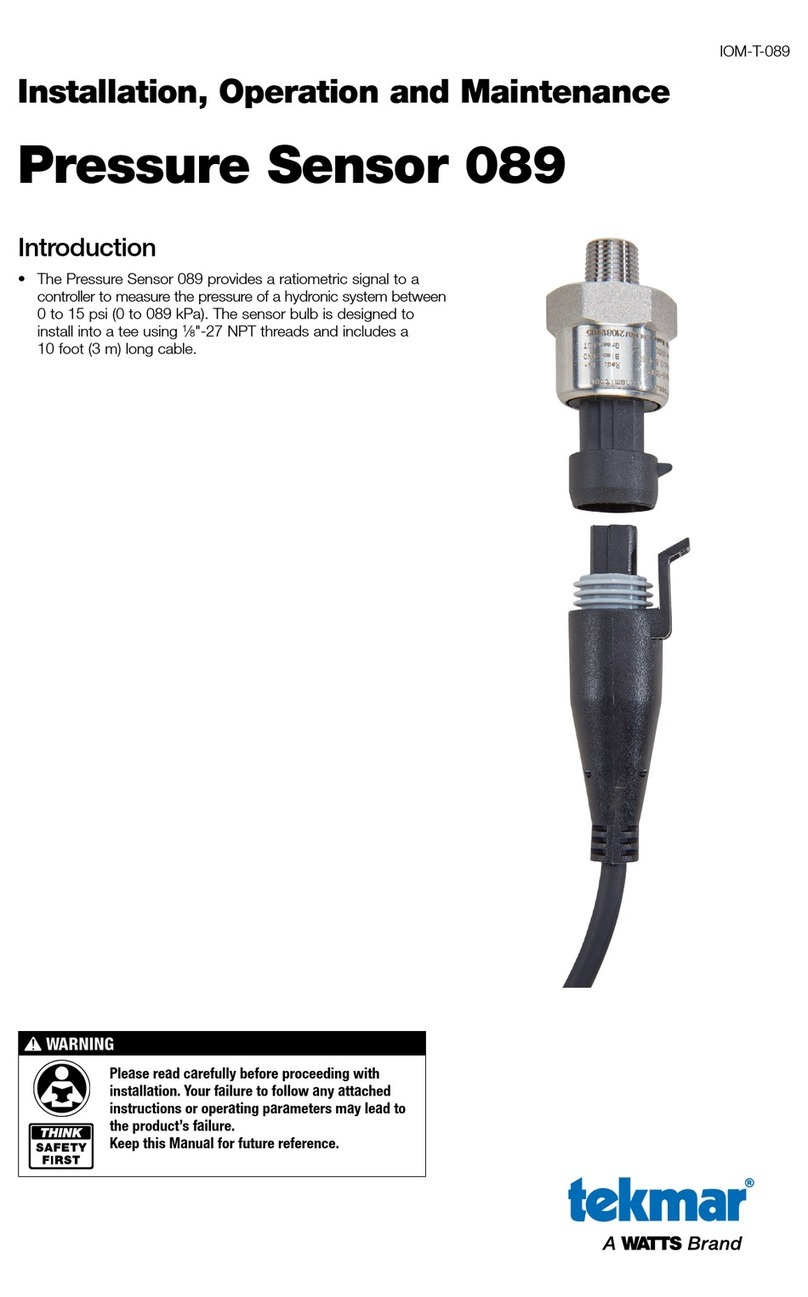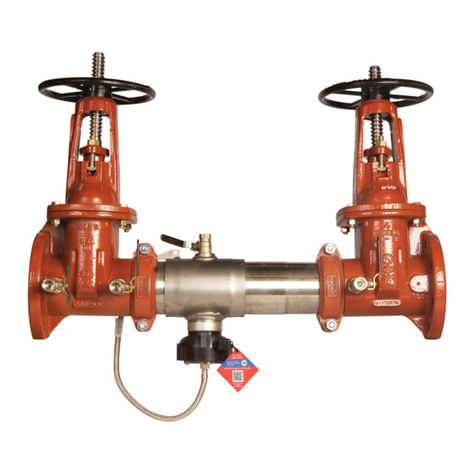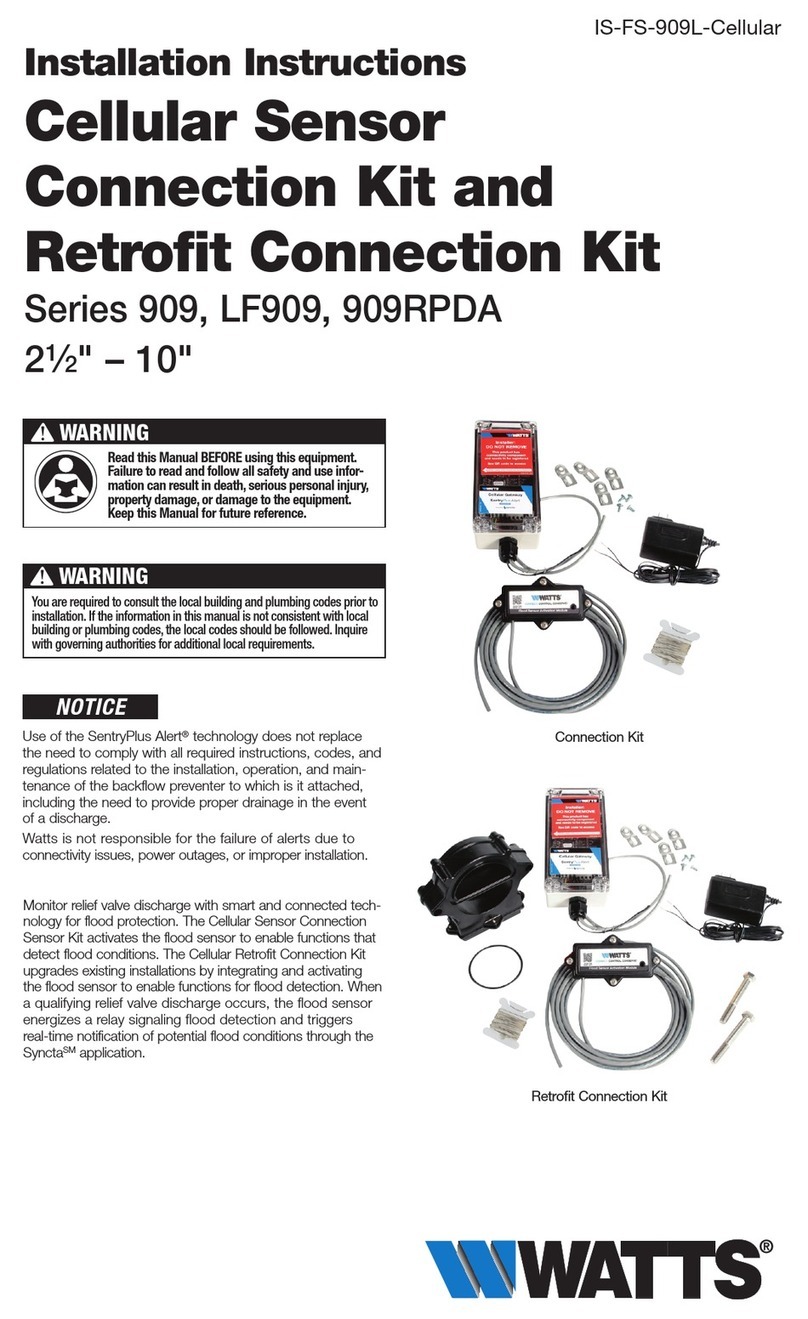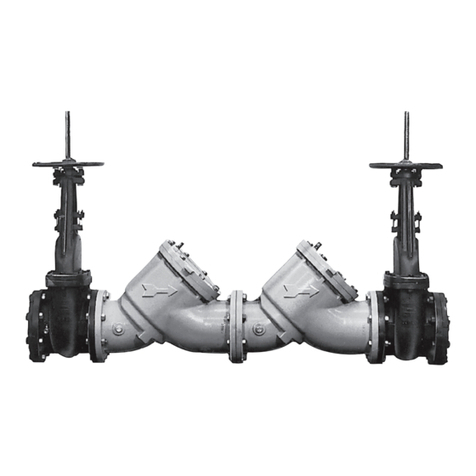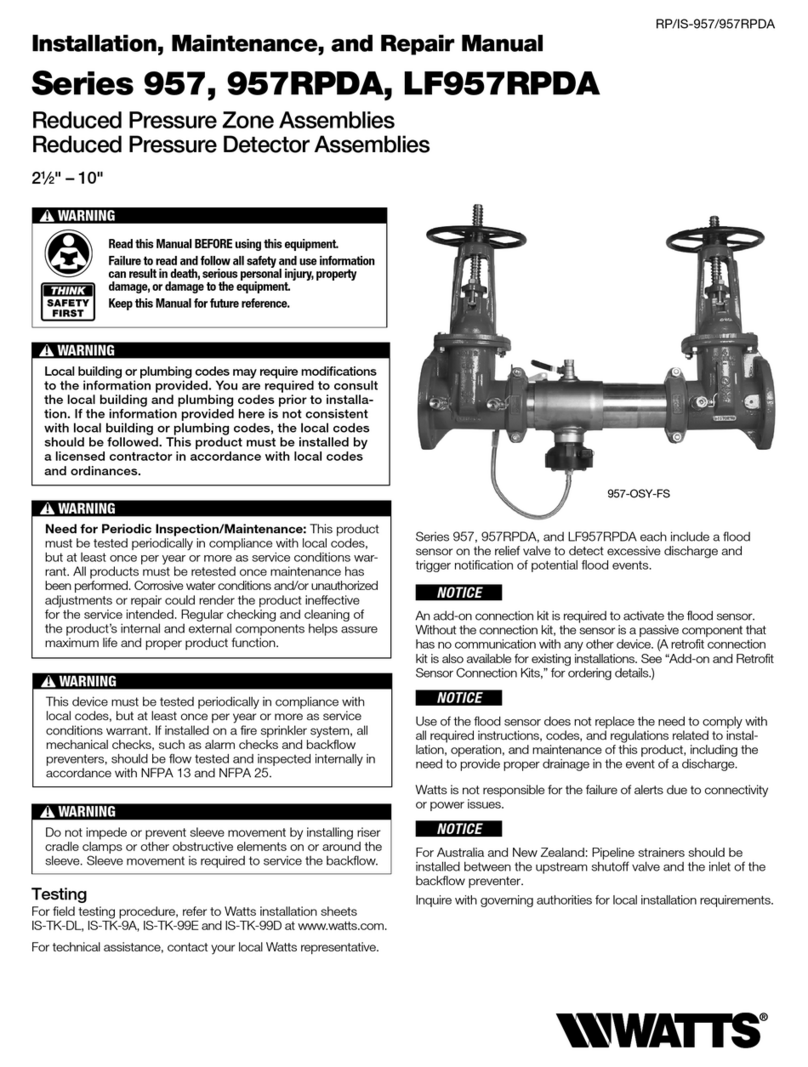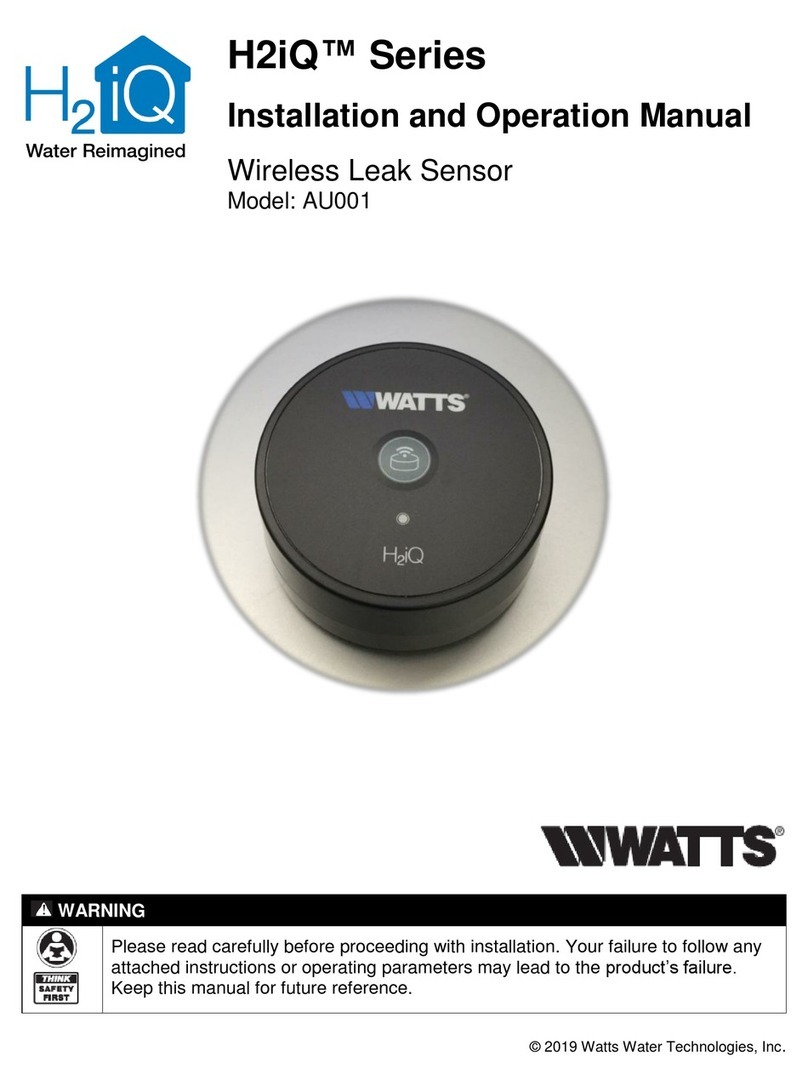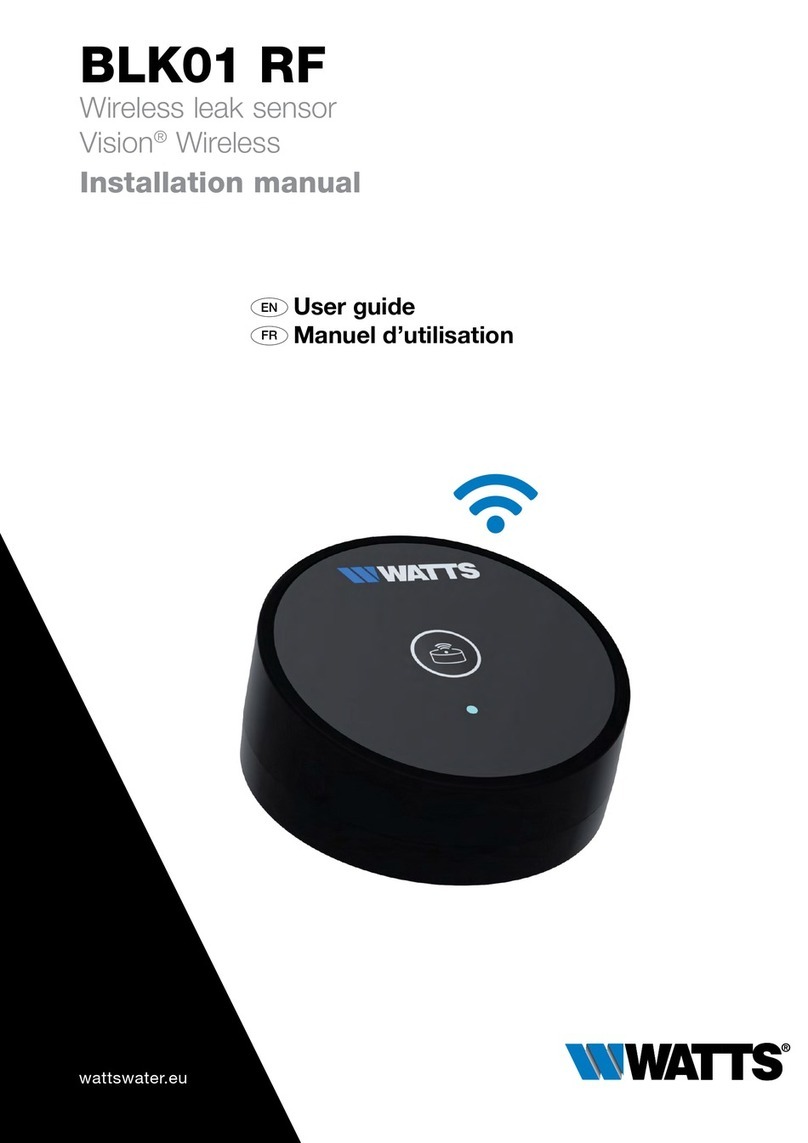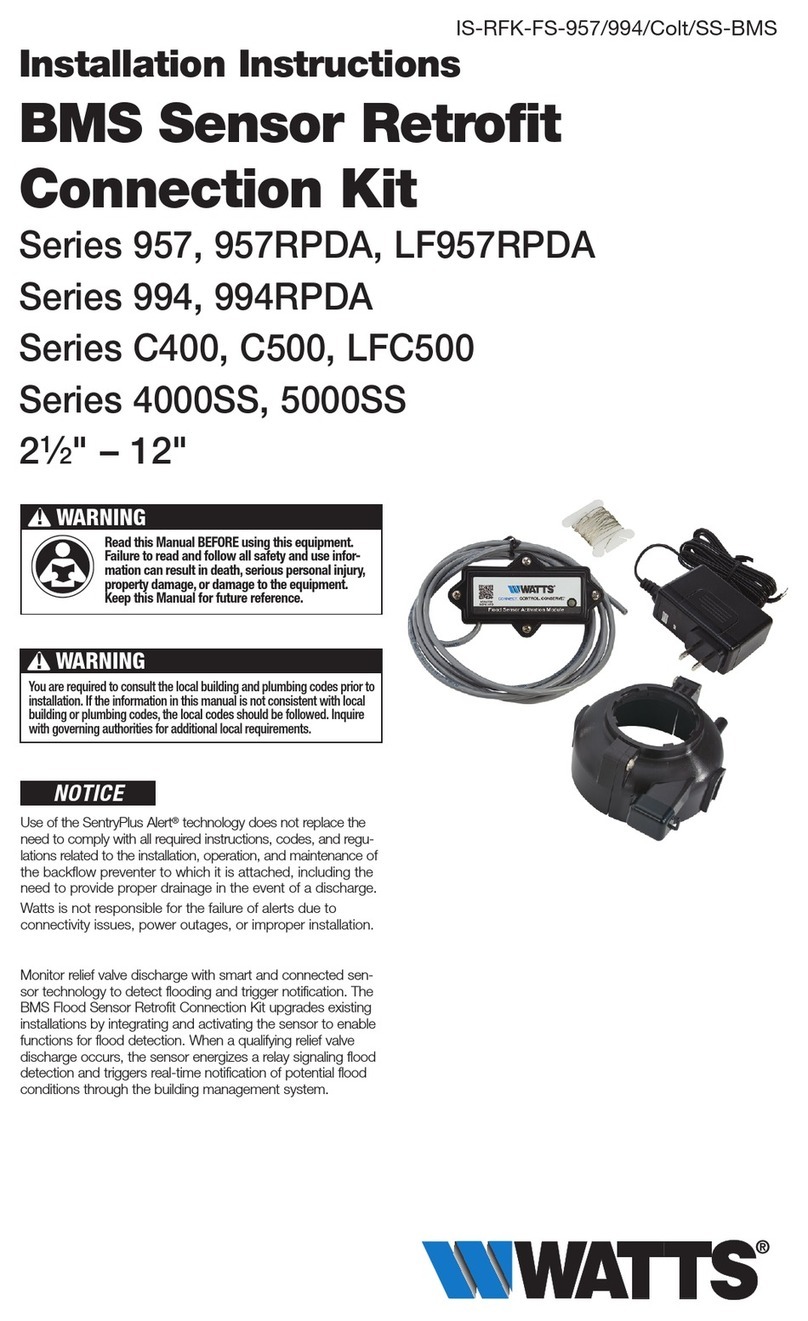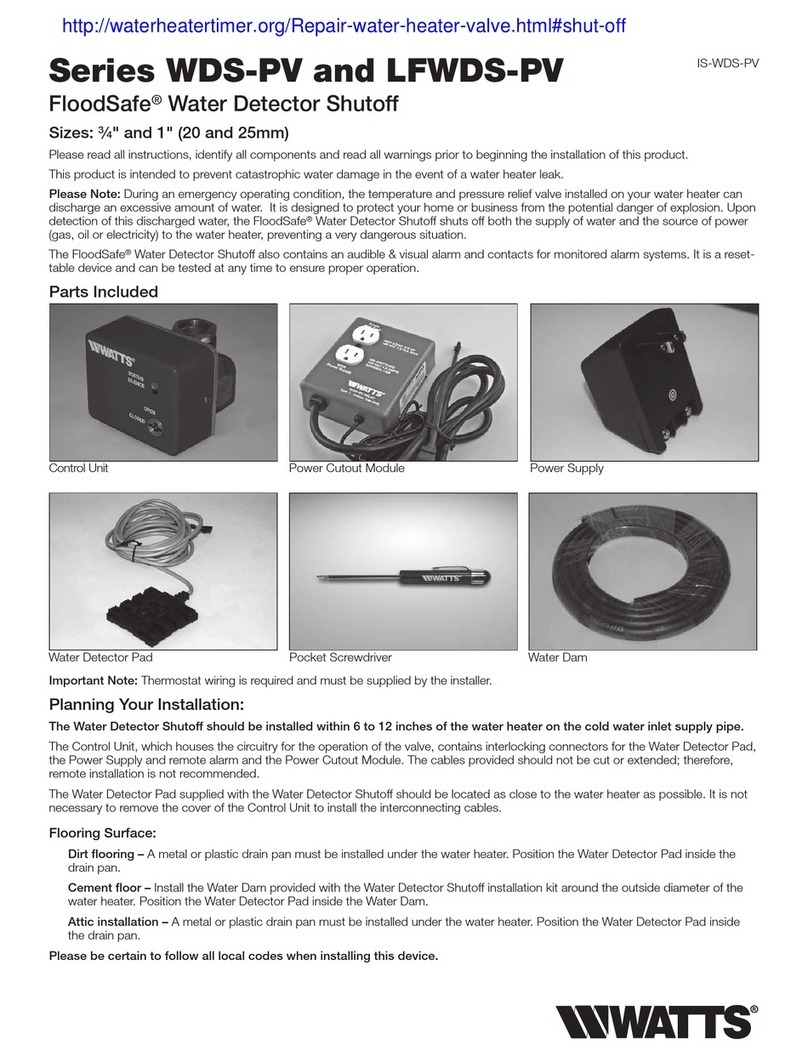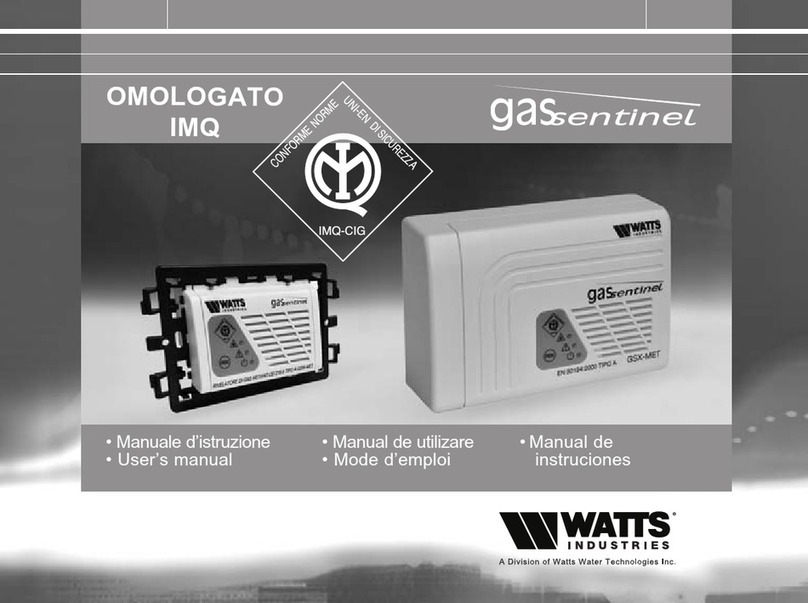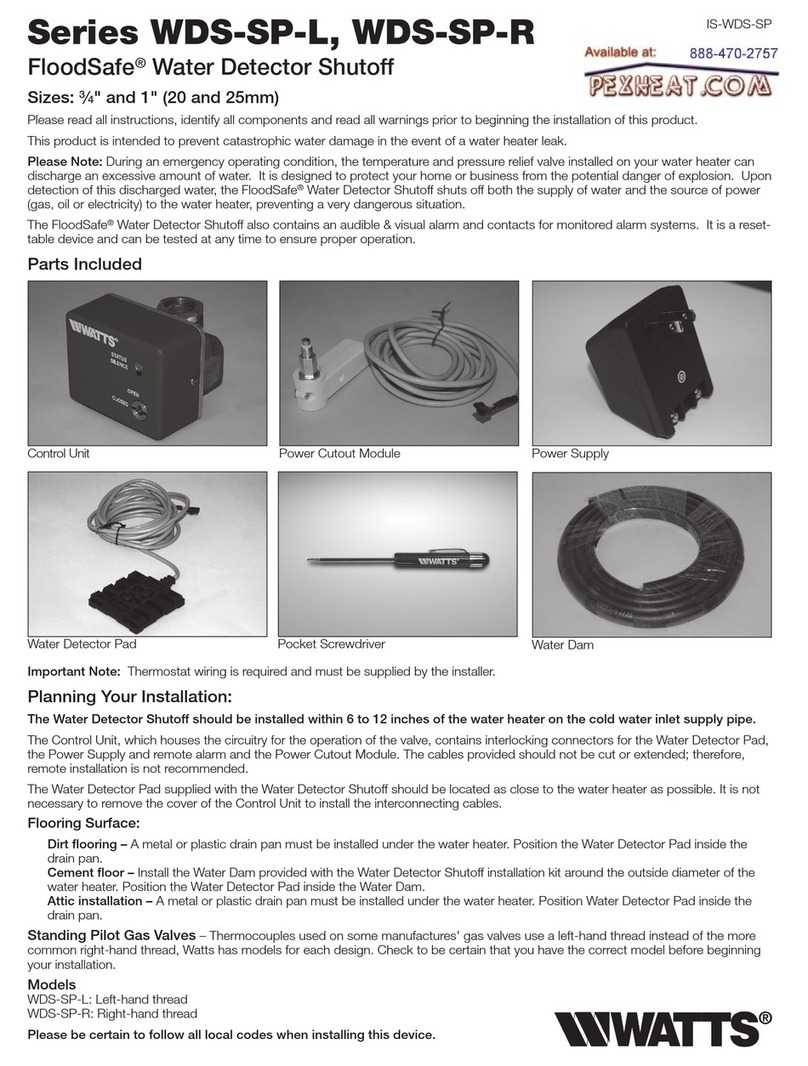
6IOM-A-Deringer 40G/40GX/50G/50GX_6-8 2005 EDP#2916009 © 2020 Watts
Maintenance of First True Seal Check Module
1. Use a #2 phillips head screwdriver to remove tower screws
(A) from the first check seat (B) the double torsion spring
is captured (C) and does not need to be retained
during maintenance.
2. After removing the tower screws (A) examine the elastomer
disk (D) and check seat (E) for fouling or damage.
3. Should elastomer disk (D) need replacement unscrew disk
retainer screws (F) and remove disk retainer (G). Carefully remove
and replace elastomer disk (D). When replacing elastomer disk
(D) be certain that no air, water or debris is trapped in the
clapper (H) cavity behind the elastomer disk (D).
4. Reverse the order of the above instructions to reassemble
check.
• Elastomer disk must be flat in clapper (H) cavity before
tightening disk retainer screws (F).
• Do not cross thread disk retaining screws (F).
• Check orientation is not important when reattaching the
check to the first check seat.
F
G
E
D
B
AH
C
D
Maintenance of Second Dual-action Check Module
1. Use a #2 phillips head screwdriver to remove tower screws
(A) from the second check seat (B) the double torsion
spring is captured (C) and does not to be retained
during maintenance.
2. After removing the tower screws (A) examine the elastomer
disk (D) and check seat (E) for fouling or damage.
3. Should elastomer disk (D) need replacement unscrew disk
retainer screws (F) and remove disk retainer (G). Carefully
remove and replace elastomer disk (D). When replacing
elastomer disk (D) be certain that no air, water or debris is
trapped in the clapper (H) cavity behind the elastomer disk (D).
4. Reverse the order of the above instructions to reassemble check.
• Elastomer disk must be flat in clapper (H) cavity before
tightening disk retainer screws (F).
• Do not cross thread disk retaining screws (F).
F
G
D
H
B
CA
E
D
NOTICE Second Check Tower Bosses and Spring Arms Face Down
Orient seat protrusions as shown
Tower Bosses
Spring Arms
The diagram on the right shows the correct orientation of the
second dual-action check module when being re-attached to
the seat. In order to maintain the performance of the valve pay
attention to the proper orientation of the check module.
